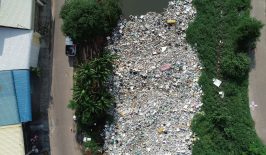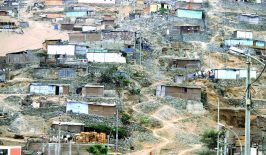Air Shepherd flies drones to stop poaching. To date, they’ve piloted over 4,000 missions to stop rhino and elephant poachers. In their own words, their work is “reversing the march of extinction”. Here’s how.
It’s an exceptionally sad state of affairs that, in 2020, the illegal ivory and rhino horn trades are both booming international industries. Ivory has been seen as a luxury since time immemorial. In some parts of the world this hard, white material is considered as valuable as gold, making it a coveted status symbol. Wealthy tourists from the West, presumably looking to decorate their mantels, are also known for smuggling it home in their suitcases
The biggest market for keratinous rhino horn, however, is believed to be Vietnam, where they, measured and valued by the kilo, can fetch tens of thousands of dollars. Like ivory, rhino horn is a marker of wealth, but many are also convinced of its medicinal value, despite the fact that repeated scientific studies have failed to corroborate this claim.
The demand for tusks and horns is propelling both the rhino and elephant to extinction. At the current rate, it’s expected that both animals could be extinct within the next two decades. The problem has never been so urgent.
But poaching in African countries, where diminishing populations of rhinos and elephants still roam, is a notoriously stubborn issue. Given how lucrative the industry for ivory and rhino horn is, perhaps that’s not surprising: poaching can be extremely profitable, and for some locals, other sorts of gainful employment aren’t easy to come by. Add to that governmental corruption and the impenetrable nature of the crime syndicates responsible for the global poaching industry, and the problem can seem impossible to overcome.Of course, because of increasing desperation to preserve vulnerable species, conservationists have also stepped up their efforts to fight illegal poaching and the technologies they use to do it – from flooding the market with fake rhino horns to using artificial intelligence to scan camera trap footage for evidence of foul play. But catching poachers in the act is no easy feat. They tend to work at night, when the cover of darkness makes tracking them across the vast African terrain nigh on impossible.
That’s where South Africa’s Air Shepherd comes in.
Air Shepherd uses a fleet of flying drones, replete with a high-tech AI, to scour the savannahs and catch poachers on the ground. The sophisticated technology was originally developed for the US military to identify roadside bombs in Iraq. Run by the non-profit Lindbergh Foundation, the Air Shepherd initiative has been described as “eyes in the sky” for the anti-poaching cause.
Drones Give Rangers the Upper Hand
It works like this: the drones, which look just like miniature planes, are flown over high probability areas, or deployed when the team has been tipped off about an upcoming poaching operation. Once a drone spots a poacher and their whereabouts is identified, the team radios nearby rangers, who can then intercept the suspects. The upper hand afforded by this technology tips the balance in favour of the rangers.
Air Shepherd drones not only catch poachers: they also serve as a crucial deterrent for future illegal operations. Because of the darkness, the drones use not just ordinary night cameras but also heat-sensitive imaging, which makes it easy to spot not just the animals, but the humans too.
The above video of Air Shepherd shows them in action – including their hushed late-night operations, with the Air Shepherd team closely monitoring several screens, some displaying GPS systems, others showing the darkened savannah. In other footage, poachers can be seen running away, suggesting that the planes have done their job. Originally started in South Africa, Air Shepherd has already been in operation for over four years now, during which time it has carried out over 4000 missions. Since its inception, Air Shepherd has launched in several other countries on the continent, including Malawi and Zimbabwe. Unfortunately, Air Shepherd has had to slow down since the Covid-19 pandemic hit.
“It’s been quite a challenge these last five months because we’ve been locked down in South Africa”, explained Otto Werdmuller Von Elgg of Air Shepherd. “Obviously the border’s been closed.” However, the border limits imposed by the pandemic have led to Air Shepherd redirecting, rather giving up, its efforts, and wading into uncharted waters. “We have been doing stuff on the Cape Coast for a lot of illegal fishing,” said Von Elgg. “We’ve been very successful there, we’ve had quite a lot of arrests. But obviously our core focus is more mammals. We hope to get back into the major parks and the cross-border stuff in the next few months.”
But of course, monitoring with drones cannot be the only solution. Rather, the aim is to develop a comprehensive approach that gets to the root of the poaching problem. Among other things, this includes reducing the poverty of the local population so that they no longer depend on illegal businesses to survive. As Otto Werdmuller Von Elgg emphasizes, an important step is to train the local population themselves as rangers and to remunerate the work accordingly.
Air Shepherd is not the only project enlisting the help of high-tech drones for the good of the natural world. Drones are currently being deployed for positive impact all over the world – being flown to plant mangroves in Myanmar for example, prevent deforestation in the Amazon, and even to help tackle plastic pollution in Cambodia.






